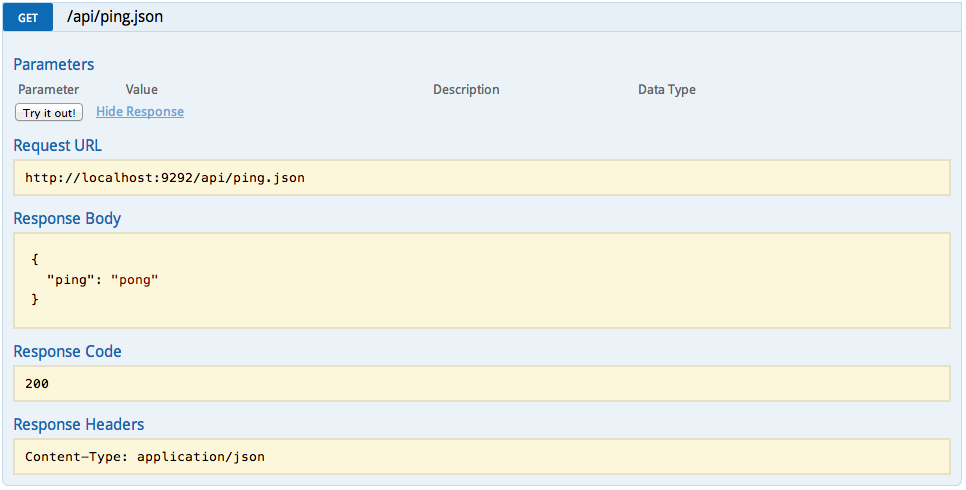The Artsy website, Partner CMS, mobile tools, and all our hackathon experiments are built on top of a core API. We’ve put a lot of effort into documenting it internally. But developers don’t want to have to grok through code. With Grape and Swagger, adding an API explorer and exposing the API documentation has never been easier.

Cross Origin Requests
You don’t need to include the API explorer into your application. Instead, enable Cross-Origin Resource Sharing (CORS) with rack-cors.
``` ruby Gemfile gem “rack-cors”
``` ruby app.rb
use Rack::Cors do
allow do
origins '*'
resource '*', headers: :any, methods: :get
end
end
Your application will now respond to OPTIONS and GET requests with CORS headers. It’s also important to verify that errors still contain CORS headers, as shown in these RSpec tests.
``` ruby spec/cors_spec.rb context “CORS” do it “supports options” do options “/”, {}, { “HTTP_ORIGIN” => “http://cors.example.com”, “HTTP_ACCESS_CONTROL_REQUEST_HEADERS” => “Origin, Accept, Content-Type”, “HTTP_ACCESS_CONTROL_REQUEST_METHOD” => “GET” } last_response.status.should == 200 last_response.headers[‘Access-Control-Allow-Origin’].should == “http://cors.example.com” last_response.headers[‘Access-Control-Expose-Headers’].should == “” end it “includes Access-Control-Allow-Origin in the response” do get “/”, {}, “HTTP_ORIGIN” => “http://cors.example.com” last_response.status.should == 200 last_response.headers[‘Access-Control-Allow-Origin’].should == “http://cors.example.com” end it “includes Access-Control-Allow-Origin in errors” do get “/invalid”, {}, “HTTP_ORIGIN” => “http://cors.example.com” last_response.status.should == 404 last_response.headers[‘Access-Control-Allow-Origin’].should == “http://cors.example.com” end end
### Grape-Swagger
There's a gem called [grape-swagger](https://github.com/tim-vandecasteele/grape-swagger) that exposes Swagger-compatible documentation from any Grape API with a one-liner, `add_swagger_documentation`.
``` ruby api.rb
module Acme
class API < Grape::API
format :json
desc "This is the root of our API."
get "/" do
end
add_swagger_documentation api_version: 'v1'
end
end
ruby spec/documentation_spec.rb
it "swagger documentation" do
get "/api/swagger_doc"
last_response.status.should == 200
json_response = JSON.parse(last_response.body)
json_response["apiVersion"].should == "v1"
json_response["apis"].size.should > 0
end
Swagger UI
Use the Swagger Petstore, start your application, enter http://localhost:9292/api/swagger_doc and explore your API!

Working Sample
You can find a working sample in this demo application, added in this commit.
Comments